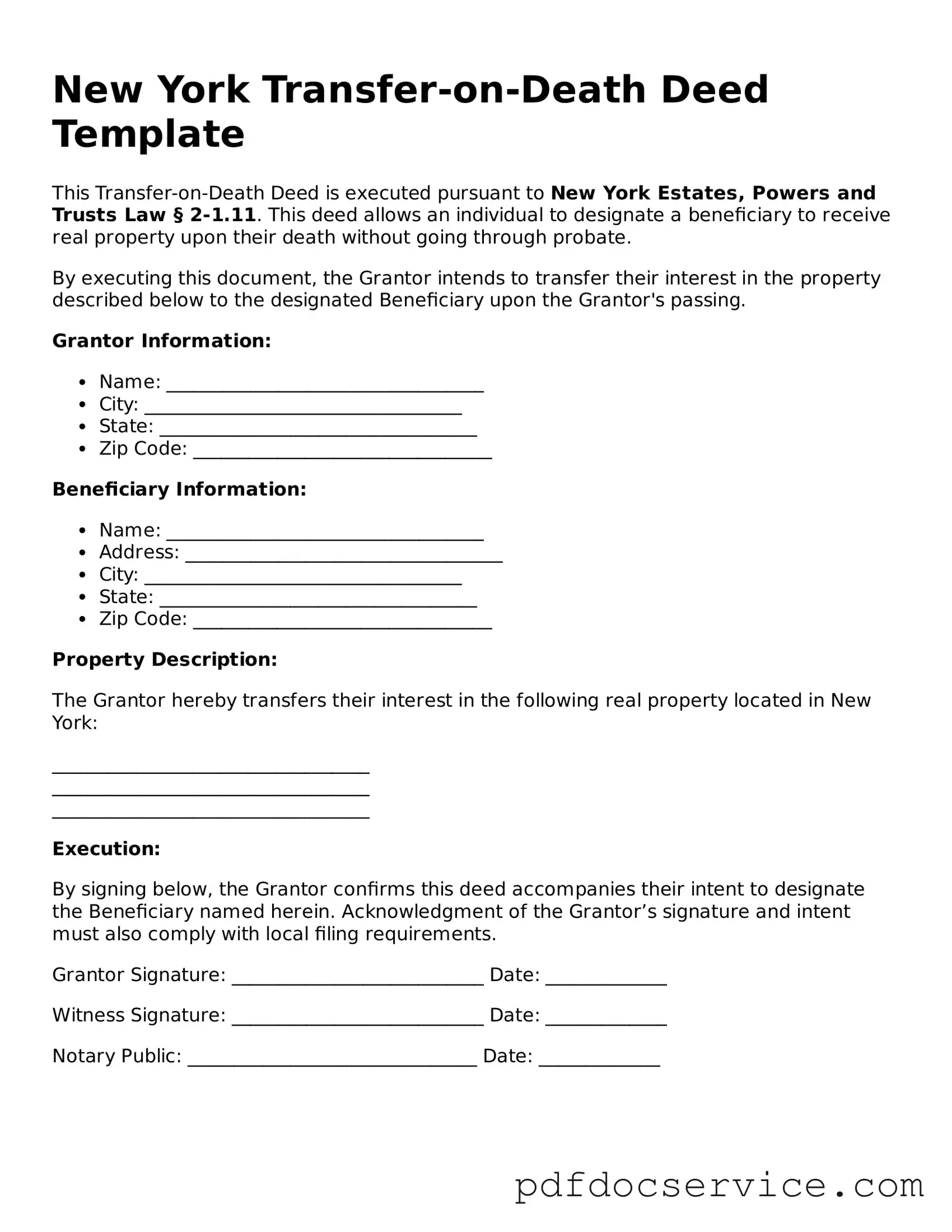Printable Transfer-on-Death Deed Template for New York
The New York Transfer-on-Death Deed form is a legal document that allows property owners to designate a beneficiary who will receive their property upon their death, without the need for probate. This form simplifies the transfer process and can provide peace of mind for both the property owner and their loved ones. Understanding how to properly complete and file this deed is essential for ensuring that your wishes are honored and your estate is managed smoothly.
Open Transfer-on-Death Deed Editor
